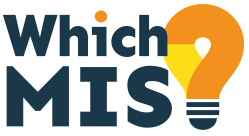We have 17 MIS systems listed in our directory and almost all of them argue they offer a one-stop-shop solution that provides everything your school needs in one place – that’s clearly the direction most MIS suppliers have been moving.
This therefore begs the question: Why do schools continue using bolt-on products rather than functionality that’s native to their MIS?
We will discuss the features and benefits of a wide range of third-party products and services in the coming months. However the principal benefits of using one system are arguably user familiarity / ease of use (not having to use – and potentially log-in to – multiple applications) and tech teams not having to support multiple systems from different suppliers.
Surely using one, single system would mean reduced workload for teachers, senior leadership teams (SLT) and support staff?
All MIS providers now provide APIs (Application Programming Interfaces) which is a way for two or more software programs to communicate with each other. Some just extract data directly from the MIS on a real time or regular basis, whilst others provide full two way, read and write back functionality.
We’re aware of many systems that continue to rely on schools downloading spreadsheets (CSV files) and uploading these into the third party software. This is not only inefficient – as every time your core MIS changes, you’ll have to manually update the ‘bolt-on’ product too – but could also prove an extra data security risk.
Disadvantages of using ‘bolt-on’ products are that your staff will need to learn different systems, and you’ll need training and support in addition to having multiple subscriptions to manage – at the same time ensuring that you’re spending your budgets as wisely.
There is an argument that using all the elements of a single package or everything from the same supplier is the most efficient, however the overwhelming fact is that schools not only want the best and most cost-effective services, but they also want systems they’ve been using in the past. If changing MIS isn’t perceived as challenging enough, trying to change everything at once can be such a shock to the system that it may also cause increased workload to your already stretched office staff, adding stress to an already overloaded team.
Clearly the one area we haven’t mentioned is that of functionality, especially the depth of speciality applications and the wide variety of additional systems schools use. MIS providers may offer a great core system and some of their additional features may provide the level of functionality you require, but it’s unlikely they’ll be as good as software from companies that specialise in these niche areas.
This trend started many years ago with timetabling and then the first parental messaging systems, but the range of products that a forward-thinking school might use nowadays include:
Messaging, parents evening and room booking systems, timetabling, payments, assessment, finance,
behaviour & achievement, analytics, clubs & trips, seating plans, homework, parent / student portal / apps, SEND, safeguarding, forms, and marksheets – to name only the most common.
There are obviously pros and cons to both in-built functionality and the use of external third-party software and we will be exploring these in coming updates. Watch this space!

